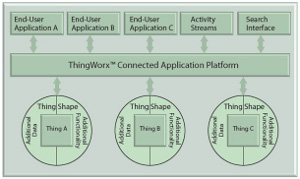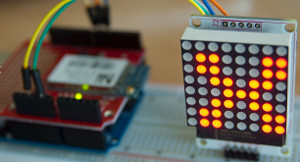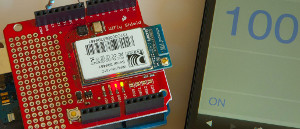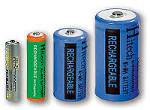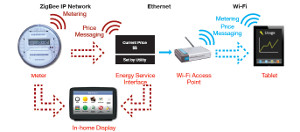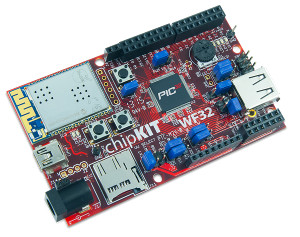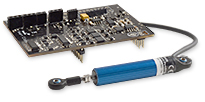ThingWorx is a relatively new offering in the Internet-of-Things platform space, offering an Internet-of-Things and Machine-to-Machine application platform which promises very fast application development, scalability, search ability and integration with other data sources such as social media, all in a complete development and runtime platform for rapidly developing sophisticated IoT and M2M applications.
The platform provides all the necessary functionality required to get your solution to market quickly and easily. Let’s take a quick look at what the ThingWorx platform promises for Internet-of-Things developers and engineers.
ThingWorx enables rapid creation of “smart” end-to-end Internet of Things applications, when used in conjunction with hardware from various vendors, for a wide range of application markets such as smart agriculture, telematics, healthcare, “smart cities”, energy efficiency, utility metering and building automation.
The platform is aimed at the building and running of the applications of a “connected world”, reducing the time to market, cost and risk associated with building innovative Internet of Things and Machine-to-Machine applications through the use of ThingWorx’s model-based design and search-based intelligence.
Furthermore, data can be integrated from a multitude of different devices, machines and sensors that make up the “Internet of Things”, collecting, tagging and relating the resulting “Big Data” of different types, creating an operational data store that becomes more valuable over time as the quantity of data and the density of relationships within that data set increases.
ThingWorx collects, tags and relates the unstructured, transactional and time-based “data exhaust” from networks of Internet-connected sensors and devices as well as data from human collaboration, such as from social media for example. This enables your team to create dynamic Internet of Things applications that evolve rapidly as new inputs and insights become available.
Dynamic applications of this kind become more valuable the more they are used and the more data they accumulate, with that data serving as a catalyst for innovation. The ThingWorx environment includes ThingWorx Composer, a unified, model-based development environment aimed at compressing the design-develop-deploy cycle, reducing time to market and spurring easier innovation.
In addition, ThingWorx also offers their “Mashup Builder”, aimed at enabling rapid assembly of applications that integrate the data, activities and events from people, systems and the physical world, in an easily accessible “zero-code” tool that is claimed to offer developers, analysts and business users the ability to create HTML5-based user experiences, analytics and dashboards in minutes, greatly expanding the accessibility of the creation and customisation of these sorts of systems.
Composer is an end-to-end application modelling environment designed to help you easily build the unique applications of an Internet-of-Things enabled world. Composer makes it easy to model the things, business logic, visualisation, data storage, collaboration, and security required for a connected application.
The “drag and drop” Mashup Builder empowers developers and business users to rapidly create rich, interactive applications, real-time dashboards, collaborative workspaces and mobile interfaces without the need for coding experience.
This next-generation application builder reduces development time and produces high quality, scalable connected applications which allow companies to accelerate the pace at which they can deliver value-added solutions for working with Internet-of-Things data.
ThingWorx’s SQUEAL (Search, Query and Analysis) intelligence tool empowers users to search the data from people, systems and machines in their Internet-of-Things world to find what they want when they want, bringing search to the world of connected devices and distributed data.
With SQUEAL’s interactive search capabilities, users can now correlate data that delivers answers to key business questions. Pertinent and related collaboration data, line-of-business system records, and equipment data get returned in a single search, speeding problem resolution and enabling innovation.
As you can imagine, ThingWorx lets you deploy their service in exactly the way you want to to meet your needs – from deployment in the cloud to local on-premises deployment, federated or embedded deployment.
ThingWorx relies on a significant network of partner companies provide ThingWorx-approved compatible hardware and firmware solutions for Internet-of-Things applications and wireless sensor networks, while ThingWorx itself focuses exclusively on the software platform.
The growing ecosystem of hardware, software and service partners surrounding ThingWorx can be leveraged to allow more rapid innovation in a ThingWorx-based environment, including access to a huge range of sensor hardware and wireless devices to suit diverse needs.
If your organisation is considering the ThingWorx plaftorm – or other systems, our engineers are equipped with the tools and experience to bring your ideas to life. To get started, join us for an obligation-free and confidential discussion about your ideas and how we can help bring them to life – click here to contact us, or telephone 1800 810 124.
LX is an award-winning electronics design company based in Sydney, Australia. LX services include full turnkey design, electronics, hardware, software and firmware design. LX specialises in embedded systems and wireless technologies design.
Published by LX Pty Ltd for itself and the LX Group of companies, including LX Design House, LX Solutions and LX Consulting, LX Innovations.

